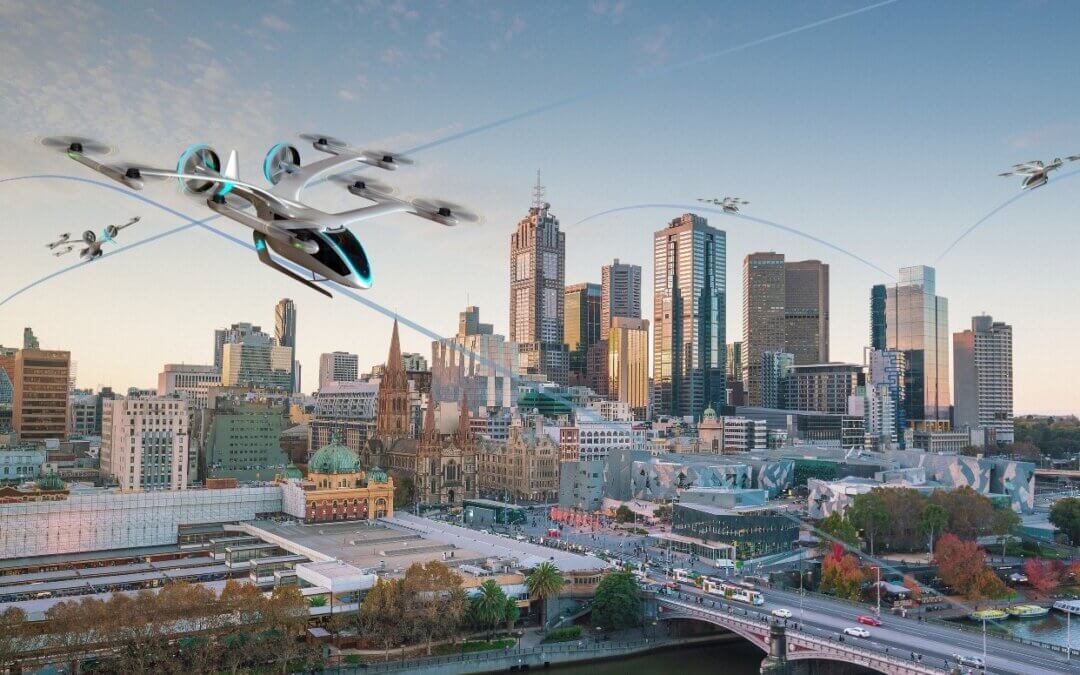Written by Suzanne Walker, Consultant Engineering – Mirragin
I attended the Australian Association for Uncrewed Systems’ Advanced Air Mobility Summit this week. As a civil engineer with a transport background, now turned drone consultant, it was a pretty exciting space to be in. Transport planning for new air mobility modes! Key benefits of this technology were claimed to be decarbonisation, decongestion, and complementing and improving existing transport infrastructure. For this post, I am going to focus on decongestion – it was something that was commonly mentioned with no justification beyond the somewhat logical conclusion that providing more capacity and alternate transport modes would move traffic volume away from roads to a degree.
As a transport engineer though, it is generally accepted that building more roads doesn’t reduce congestion on existing roads. Unfortunately, as humans, we are pretty good at expanding to fit the capacity that is available. An empty new road with lots of lanes – asphalt or a route in the sky, results in induced demand – the new infrastructure encourages more people to use it. We have tried building more roads to outpace the demand, and funnily enough, it never works. Even building more public transport doesn’t seem to help. Obviously there are limits to this theory, if you build a 50, or 100, or 200 lane road, maybe you might get a different result, but that sounds like a horrible place to live. Conversely, road pricing does reduce congestion, but today is not the day for a conversation on socio-economic equality and road access.
Instead I want to discuss the concept of a road diet. If adding lanes doesn’t help, but charging people to access them does, it makes sense that changing or cutting back on lanes can impact congestion. The most commonly known configuration is taking out a through lane, and making it a centralised turning lane. But the underlying principle is reconfiguring the space to meet the needs of the community – it isn’t always more space for vehicles. Taking out a lane and adding a bike lane, or parking or a bus lane, are all examples of a road diet, even removing the road and replacing it with a pocket park. Deciding what is required in that space, and it doesn’t have to be a permanent decision – COVID showed us that temporary pop up dining spaces in streets and car parks were great.
There are so many benefits to reconsidering and reconfiguring the spaces around us. By going to the 3 lane configuration of one lane for each direction and a centre turning lane, from a 4 lane road, you actually can reduce waiting times because turning vehicles don’t block lanes, you reduce weaving, traffic flows better, and therefore a reduction in crashes. Plus vehicle capacity effectively remains the same. A slight speed reduction is observed, but that is partially due to being a consistent speed instead of an accordion start stop speed. Even better, by smoothing out the traffic you reduce emissions, and heavy braking. But road diet treatments shouldn’t stop at car benefits, the consistent speed makes it easier for pedestrians and cyclists to interact. We can improve safety further for pedestrians and cyclists by adding lanes or centre refuge islands, improve amenity, and change the road environment to make our lives better, without causing large delay to our transport network.
The only limitation is thinking that we need more traffic lanes to the detriment of everyone else in the space. Advanced air mobility is seen as futuristic, but drone deliveries are already happening. It might not have the ability to reduce congestion on roads, but we can definitely use the opportunity to encourage advancement across the transport infrastructure network. We can move beyond traditional answers such as multi lane road design because it is how it always looked, and find solutions that are right for each community.

Suzanne is an experienced engineer with a passion for problem solving, leadership, research informing best practice, and making a positive impact. She has a wide range of multidisciplinary experience, across traffic, rail, major road infrastructure projects, OEM manufacturing, STEM research, and project management. Suzanne started with Mirragin in January 2022 and is now working with drones, autonomous systems, and AI. Suzanne is also undertaking a PhD exploring how community knowledge can be implemented better in engineering projects to improve design outcomes.

